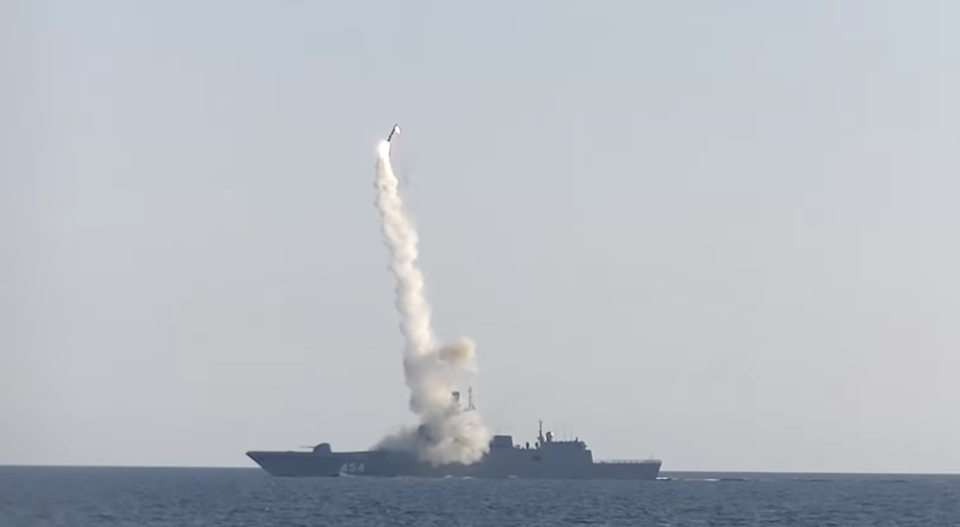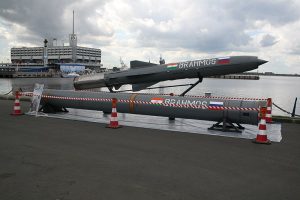
What are hypersonic missiles? Who has them? What makes them so deadly?

The Russian defence ministry said on Saturday it had used hypersonic weapons to destroy an underground military depot in Ivano-Frankivsk Oblast, in western Ukraine.
The ministry identified the weapon as the Kh-47M2 Kinzhal, a nuclear-capable hypersonic aero-ballistic air-to-ground missile, with a claimed range of more than 2,000 kilometres and Mach 10 speed.
“The Kinzhal aviation missile system with hypersonic aeroballistic missiles destroyed a large underground warehouse containing missiles and aviation ammunition in the village of Deliatyn in the Ivano-Frankivsk region,” the ministry said in a statement.
The missile was one of an array of new weapons Russian President Vladimir Putin unveiled in his state-of-the-nation address in 2018.
What are hypersonic missiles?
Hypersonic missiles travel at speeds of Mach 5 and higher – i.e., five times faster than the speed of sound. Some, like the Kh-47M2 Kinzhal, are capable of reaching Mach 10 speeds (12,347kmph).
For comparison, the US Tomahawk cruise missile – the US and British navies’ go-to long-range missile-system – is subsonic, travelling around 885kmph.
Two variants: Cruise missiles and glide vehicles
Hypersonic missiles come in two variants: cruise missiles and glide vehicles
The first type reaches its target with the help of a high-speed jet engine that allows it to travel at extreme speeds, in excess of Mach-5. It is non-ballistic – meaning the opposite of traditional intercontinental ballistic missiles, which utilise gravitational forces to reach their target.
The second type utilises re-entry vehicles. Initially, the missile is launched into space, where the warheads are released and fall towards the atmosphere at hypersonic speeds. Rather than leaving the payload at the mercy of gravitational forces – as is the case for traditional ICBMs – the warheads are attached to a glide vehicle, which re-enters the atmosphere and through its aerodynamic shape it can ride the shockwaves generated by its own lift as it breaches the speed of sound, giving it enough speed to overcome existing missile defence systems.
Can hypersonic missiles be stopped?
There is currently no operational or reliable method of intercepting hypersonic missiles. In future, technologies such as particle beams and other non-kinetic weapons will be likely candidates for an effective defence against them.
How do they differ from subsonic and supersonic missiles?
Subsonic missiles are slower than the speed of sound. Most well-known missiles – US Tomahawk, India’s Nirbhay – fall into this category. Subsonic missiles travel at a speed around Mach-0.9 (1,134.5kmph). They are slow and easier to intercept, but they still play a huge role in modern battlefields. Not only are subsonic missiles substantially cheaper to produce as the technological challenges have already been overcome and mastered, but they provide an additional layer of strategic value due to their low speed and small size. Once a subsonic missile has been launched, it can loiter in proximity to its intended target as a result of its fuel efficiency. This, combined with its low speed, gives military decision-makers ample time to decide if a strike should be continued or abandoned. Comparatively, a hypersonic or supersonic missile compresses the time afforded to decisions-makers into a matter of minutes.

A supersonic missile exceeds the speed of sound (Mach 1) but is not faster than Mach-3. Most supersonic missiles travel at a speed between Mach-2 and Mach-3, which is up to 3,701kmph. Currently the best known and fastest supersonic missile in operation is the Indian/Russian BrahMos.
Who has them?
China, the US and Russia have the most advanced capabilities, and several other countries also have hypersonic missile programmes, including India, Japan, Australia, France, Germany. North Korea claims to have tested a hypersonic missile.

